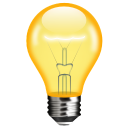Ribbon menus
Ribbon menus are a type of user interface element primarily used in software applications, most famously implemented by Microsoft in its Office suite starting with Office 2007. This graphical control element replaces the traditional menu bars and toolbars with a set of tabs at the top of a window, where each tab contains related groups of commands and tools that would be useful for a particular task or context within the application.
Here's how the ribbon menus generally work and what their main features are:
•Tabbed Interface: The ribbon organizes tools and commands on different tabs, with each tab focusing on a certain kind of task or function (e.g., "Home," "Insert," "Design," "Layout"). For instance, in Microsoft Word, tools related to text formatting would be under one tab, while those for page layout would be under another.
•Contextual Tabs: Some tabs only appear when they are needed, based on the context of the work the user is doing. For example, if you select an image in a Word document, a new tab might appear with tools specifically for formatting images.
•Groups and Tools: Within each tab, commands are organized into groups. These groups consolidate what might have previously been scattered across various parts of the menu and toolbars in older designs. This layout makes it easier for users to find the features they need, as they might expect certain types of tools to be grouped together.
•Icons and Labels: To make it easier to find and recognize features, the ribbon uses both icons and labels. This is especially helpful for more visual people and stands in contrast to older styles of menus, which often relied solely on text.
•Collapsible: Ribbons can often be minimized or collapsed to allow more screen space for the actual content you're working on. This can be especially helpful if you're working on a device with a smaller screen, like a laptop or tablet.
The ribbon interface was designed with the intention of making the user experience more intuitive and efficient, bringing the most commonly used commands and tools to the forefront and making them easier to find. While it was met with some resistance initially due to the significant shift from familiar menu systems, it has since been adopted by many software applications outside of Microsoft Office due to its user-friendly nature.
AutoTRAX DEX Ribbon Menu
The Ribbon menu is home to hundreds of commands. It consists of several ribbon pages filled with commands and appears at the top of AutoTRAX DEX's main window.
You make changes to your design using:
•The Ribbon Menu
•Interacting with the viewports using the mouse and keyboard.
•Making changes using one of the many panels.
You can easily customize the command keyboard shortcuts using the Shortcuts Editor. |
